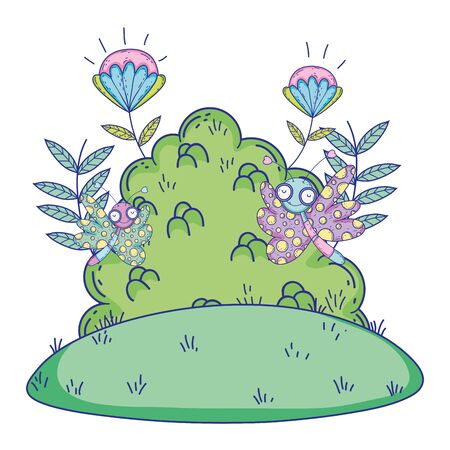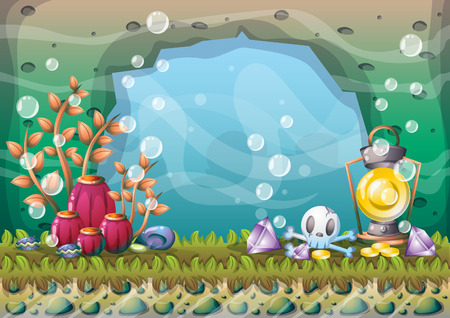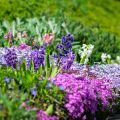Introduction to Wildlife-friendly Garden Ponds
Garden ponds have long been a cherished feature in British gardens, offering both aesthetic appeal and practical benefits. In the context of supporting local wildlife and promoting biodiversity, these water features play an essential role. A well-maintained pond provides a vital habitat for native species such as frogs, newts, dragonflies, and a variety of aquatic insects, all of which contribute to a balanced garden ecosystem. Moreover, garden ponds act as important sources of drinking water for birds and mammals, especially during dry spells. By integrating wildlife-friendly practices into pond maintenance, gardeners can help counteract the decline of natural wetland habitats across the UK. This not only enriches the local environment but also enhances the overall health and vibrancy of the garden itself.
Maintaining Water Quality
Ensuring high water quality is fundamental for the health of your garden pond and its ability to support local wildlife. Clean, balanced water not only sustains aquatic plants and animals but also helps prevent common issues such as algae blooms and unpleasant odours.
Essential Tips for Clean, Balanced Water
- Monitor Water Chemistry: Regularly test the pond’s pH, ammonia, nitrite, and nitrate levels. Aim for a neutral pH (around 7), as many native British species thrive in these conditions.
- Avoid Overfeeding Fish: Excess food decomposes, leading to nutrient build-up and poor water quality. Feed small amounts that fish can consume within a few minutes.
- Remove Debris: Skim fallen leaves, twigs, and other organic matter with a net, especially during autumn, to prevent decay and nutrient overload.
Rainwater Usage
Using rainwater can be beneficial as it is generally softer than tap water and free from chlorine. However, it is important to ensure rainwater collected from roofs or gutters does not introduce contaminants. Use a rain barrel with a fine mesh filter and clean the collection system regularly.
Pond Filtration Systems in the UK
A suitable filtration system is vital for maintaining healthy water quality. In the UK, commonly used systems include:
| Filtration Type | Description | Benefits |
|---|---|---|
| Mechanical Filters | Physically remove debris and particles from water | Keeps water clear; easy maintenance |
| Biological Filters | Use beneficial bacteria to break down toxins like ammonia | Promotes stable ecosystem; supports wildlife health |
| UV Clarifiers | Sterilise water by killing algae cells with ultraviolet light | Reduces green water; safe for fish and plants |
Seasonal Considerations for Pond Maintenance
Ponds require different care throughout the year. In spring and summer, monitor water levels due to evaporation and add fresh rainwater if needed. During autumn, increase debris removal as leaves fall. In winter, avoid breaking ice suddenly to protect hibernating wildlife—use a pond heater or float a ball on the surface instead.
Summary Table: Seasonal Maintenance Checklist
| Season | Main Tasks |
|---|---|
| Spring/Summer | Top up with rainwater; monitor filtration; trim plants; check for algae growth |
| Autumn | Increase leaf removal; inspect equipment before winter; thin out overgrown plants |
| Winter | Avoid disturbing ice; maintain oxygen exchange; reduce feeding if fish are present |
Caring for your pond’s water quality throughout the year ensures a thriving habitat for local wildlife while keeping your garden feature attractive and sustainable.

3. Native Plants for Pond Health
Incorporating native aquatic plants into your garden pond is essential for creating a thriving ecosystem that both supports local wildlife and maintains pond health. Native species are well-adapted to the British climate and play a pivotal role in providing shelter, breeding grounds, and food sources for indigenous fauna such as frogs, newts, dragonflies, and birds.
Benefits of Native Aquatic Plants
Native plants contribute significantly to water quality by oxygenating the pond and absorbing excess nutrients that could otherwise lead to algal blooms. Their root systems help stabilise the pond bed, reducing erosion and providing habitat complexity that encourages biodiversity. Moreover, these plants are less likely to become invasive or disrupt natural balances compared to non-native alternatives.
Recommendations for Plant Selection
When choosing plants, opt for a mix of submerged, marginal, and floating species native to the UK. Consider including:
- Submerged plants: Hornwort (Ceratophyllum demersum) and Water Starwort (Callitriche spp.) oxygenate water and offer cover for aquatic life.
- Marginal plants: Marsh Marigold (Caltha palustris) and Purple Loosestrife (Lythrum salicaria) provide nectar for pollinators and shelter for amphibians.
- Floating plants: Frogbit (Hydrocharis morsus-ranae) and Water Crowfoot (Ranunculus aquatilis) supply shade and resting places for insects and birds.
Ongoing Maintenance Tips
Regularly monitor plant growth to prevent overcrowding, which can deplete oxygen levels. Remove decaying leaves to minimise nutrient build-up and maintain clear water. Avoid introducing ornamental or non-native species that could outcompete local flora. By favouring native aquatic plants and maintaining them thoughtfully, you will foster a balanced environment where local wildlife can flourish while ensuring the long-term health of your garden pond.
4. Encouraging Local Wildlife
Creating a pond that attracts and supports local wildlife is an essential aspect of sustainable garden design. By incorporating features that cater to the needs of amphibians, insects, and birds, you contribute to biodiversity while enjoying a thriving ecosystem in your outdoor space. Below are key recommendations for making your pond a welcoming habitat:
Designing Wildlife-Friendly Pond Edges
Shallow pond margins are particularly valuable for frogs, newts, and dragonflies. Gradually sloping edges allow easy access and exit for amphibians and provide a safe drinking spot for birds. Avoid steep sides, as these can deter wildlife from entering or may pose a risk of trapping smaller creatures.
Providing Shelter with Natural Materials
Incorporating log piles, rock stacks, and leaf litter around your pond offers shelter and breeding sites for insects, amphibians, and small mammals. These natural materials not only enhance aesthetic appeal but also create microhabitats critical for overwintering and protection from predators.
Selecting Native Vegetation
Planting native aquatic and marginal plants is vital. Indigenous species are better adapted to the UK climate and provide essential food sources and shelter for local fauna. Diverse planting encourages a balanced ecosystem by supporting pollinators and deterring invasive pests.
Key Features to Support Local Wildlife
| Feature | Wildlife Supported | Benefit |
|---|---|---|
| Shallow Edges | Amphibians, Birds | Safe access; breeding grounds |
| Log Piles & Rock Stacks | Insects, Amphibians | Shelter; overwintering sites |
| Native Plants | Insects, Birds, Amphibians | Food source; cover; nesting material |
Additional Tips for Success
- Avoid using chemical treatments that can harm wildlife.
- Allow some areas of the pond to remain undisturbed for natural colonisation.
- Install a gently sloped ramp or stones to help hedgehogs and other small animals escape if they fall in.
Cultivating a wildlife-friendly garden pond not only enhances the beauty of your landscape but also plays a crucial role in preserving Britains native species. Thoughtful planning and ongoing care will ensure your pond remains a sanctuary for nature year-round.
5. Routine Pond Maintenance
Establishing a consistent maintenance routine is crucial for sustaining a healthy garden pond that benefits local wildlife. In the UK, ponds are vital habitats for amphibians, insects, and birds, so adopting best practices helps support these species while keeping your pond attractive and balanced.
Debris Removal
Regularly removing leaves, twigs, and other organic matter is essential, especially during autumn when leaf fall is at its peak. Excessive debris can decompose in the water, leading to nutrient build-up and poor water quality. Use a fine-mesh net to skim the surface weekly and clear out submerged material from the bottom as needed. This simple step prevents sludge accumulation and maintains a healthier environment for aquatic life.
Monitoring Algae Growth
Algae are a natural part of pond ecosystems, but unchecked growth can harm water quality and wildlife. Monitor your pond frequently for signs of green water or blanket weed. Encourage a balanced ecosystem by planting native oxygenators such as hornwort or water crowfoot, which compete with algae for nutrients. Avoid using chemical algicides, as these may disrupt beneficial organisms and harm sensitive species commonly found in British gardens.
Responsible Use of Pond Treatments
If treatments are necessary, opt for wildlife-friendly products specifically designed for use in UK garden ponds. Always read labels carefully and follow dosage recommendations to avoid adverse effects on frogs, newts, and insects. Where possible, favour natural solutions such as barley straw pads to help control algae growth without introducing harmful substances.
Regular Water Testing
Test your pond’s water quality periodically using test kits widely available at garden centres across the UK. Monitor parameters such as pH, ammonia, and nitrate levels to ensure they remain within safe ranges for local flora and fauna. Address any imbalances promptly to sustain a thriving habitat.
Seasonal Adjustments
Adapt your maintenance schedule throughout the year; for example, reduce feeding fish as temperatures drop in autumn and ensure ice-free patches during winter to allow gas exchange for overwintering wildlife. These seasonal considerations reflect best practice in British pond care and help safeguard native biodiversity all year round.
6. Seasonal Care Tips
Adapting your pond maintenance routines to the changing British seasons is essential for supporting local wildlife and ensuring your garden pond remains a thriving habitat all year round. Each season presents unique challenges and opportunities, so a tailored approach will help maintain water quality, plant health, and safe refuge for native species.
Spring: Reawakening the Pond
As temperatures rise and daylight increases, aquatic life becomes more active. Remove any winter debris such as fallen leaves or twigs using a pond net, taking care not to disturb overwintering amphibians. Check pumps and filters for functionality, and gently prune or replant marginal plants as necessary. Monitor water quality and top up evaporation losses with rainwater if possible.
Summer: Managing Growth and Water Quality
The summer months encourage both plant and algae growth. Thin out excessive aquatic vegetation to prevent overcrowding, but leave some foliage for shade and shelter. Regularly check water levels during hot spells, topping up with dechlorinated water to support fish and invertebrates. Consider providing floating plants like water lilies to reduce sunlight penetration, which helps control algal blooms naturally.
Autumn: Preparing for Colder Weather
With falling leaves and cooling temperatures, it’s important to net your pond to prevent organic matter accumulation. Gradually reduce feeding of fish as their metabolism slows. Trim back dying plants, but leave some stems standing around the pond edge to offer shelter for overwintering insects and amphibians. Clear sludge build-up if necessary, always checking for hidden wildlife before disturbing silted areas.
Winter: Protecting Wildlife in Dormancy
Ponds often freeze over in winter, so float a tennis ball or install a small pond heater to maintain an ice-free area for gas exchange. Avoid breaking the ice abruptly, as vibrations can harm hibernating creatures. Leave submerged plants undisturbed as they provide oxygen and cover for aquatic animals. Refrain from feeding fish once the temperature consistently drops below 8°C.
Year-Round Vigilance
Regularly observe your pond throughout the year to identify any changes in wildlife activity or water quality. Keep a light touch when intervening—preserving natural processes benefits both plants and animals. By aligning your maintenance practices with seasonal rhythms, you’ll foster a resilient ecosystem that supports local British wildlife whatever the weather.
7. Troubleshooting Common Pond Issues
Even the best-maintained garden ponds can encounter issues that threaten their health and the well-being of local wildlife. In the UK, several common problems arise, from invasive species to pond leaks and a noticeable decline in native wildlife. Understanding how to identify and address these challenges is crucial for maintaining a thriving ecosystem.
Invasive Species Management
Invasive plants such as New Zealand pygmyweed (Crassula helmsii) or floating pennywort (Hydrocotyle ranunculoides) can quickly dominate a pond, outcompeting native flora and reducing biodiversity. Regularly inspect your pond for unfamiliar plant growth and remove invasive species promptly. Dispose of them responsibly—never compost or discard them in natural watercourses. For animal invaders like non-native fish or American signal crayfish, seek advice from local wildlife authorities, as their removal often requires specialist intervention.
Addressing Pond Leaks
Pond leaks are another frequent concern, often signalled by unexplained drops in water levels. Begin troubleshooting by examining the pond liner for visible tears or punctures, particularly along the edges where damage is most likely. Small holes can sometimes be patched using repair kits suitable for your liner material. If the leak persists, consider consulting a professional to avoid further habitat disruption. Always refill with rainwater where possible to maintain a chemical-free environment supportive of wildlife.
Reviving Declining Wildlife Presence
A reduction in amphibians, insects, or bird visitors may indicate issues with water quality or pond structure. Test the water regularly for pH, ammonia, and nitrate levels; excessive nutrients may signal overfeeding of fish or runoff from fertilised lawns. To enhance habitat value, diversify planting with native marginal and aquatic species, provide shaded areas with logs or stones for shelter, and ensure gentle sloping edges for easy access by small creatures.
When to Seek Expert Help
If persistent problems occur despite your best efforts—such as recurring algal blooms, continual loss of wildlife, or structural failures—it may be time to consult with local conservation groups or pond specialists. They can offer tailored advice suited to the unique conditions of British gardens and recommend sustainable solutions that support both your pond’s health and the wider local ecosystem.
Proactive Monitoring for Long-Term Success
Regular monitoring and swift intervention are essential for preventing minor issues from escalating into major threats. By staying vigilant and responsive to changes within your pond environment, you’ll not only protect your investment but also contribute meaningfully to supporting UK wildlife in your own garden oasis.


